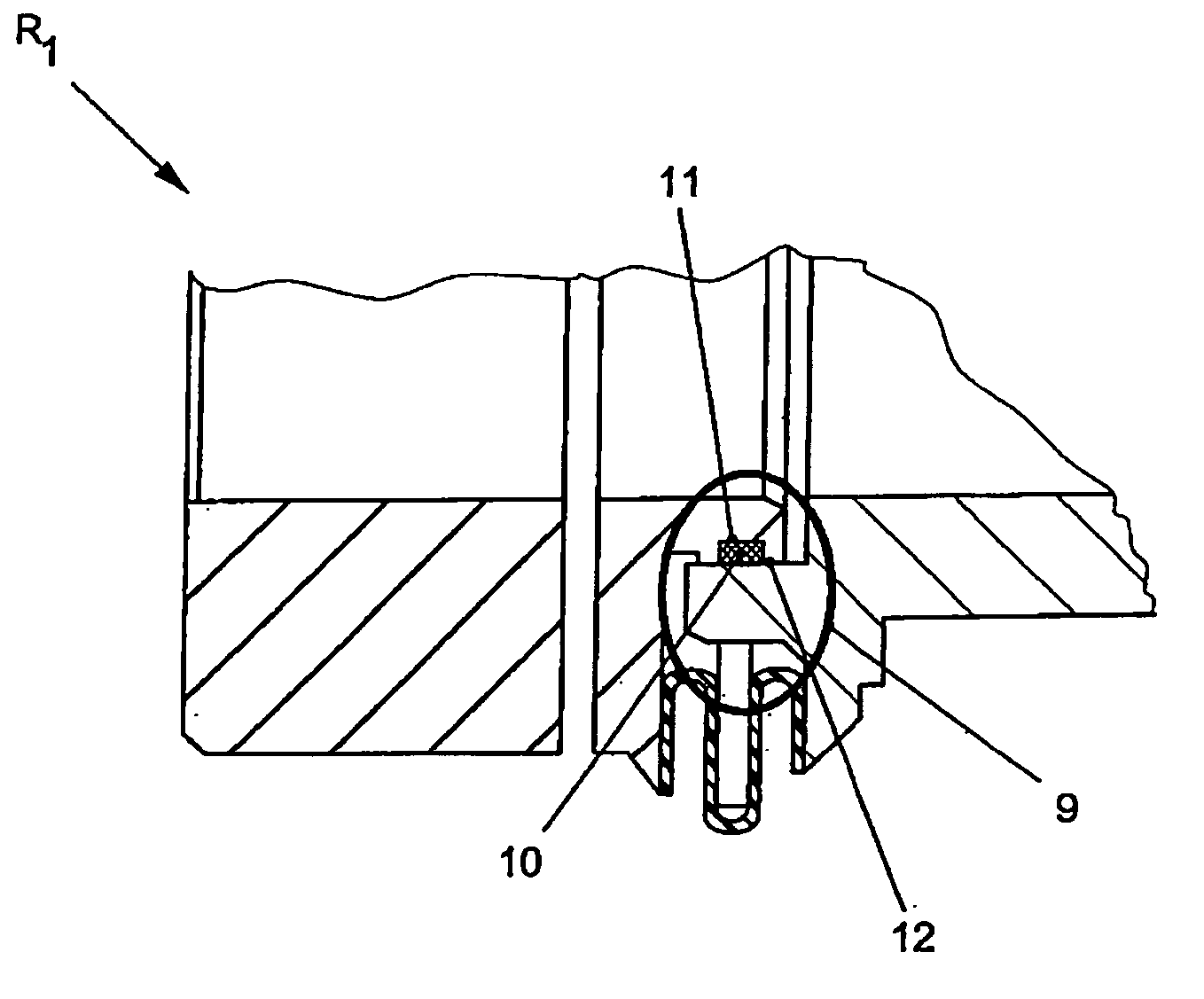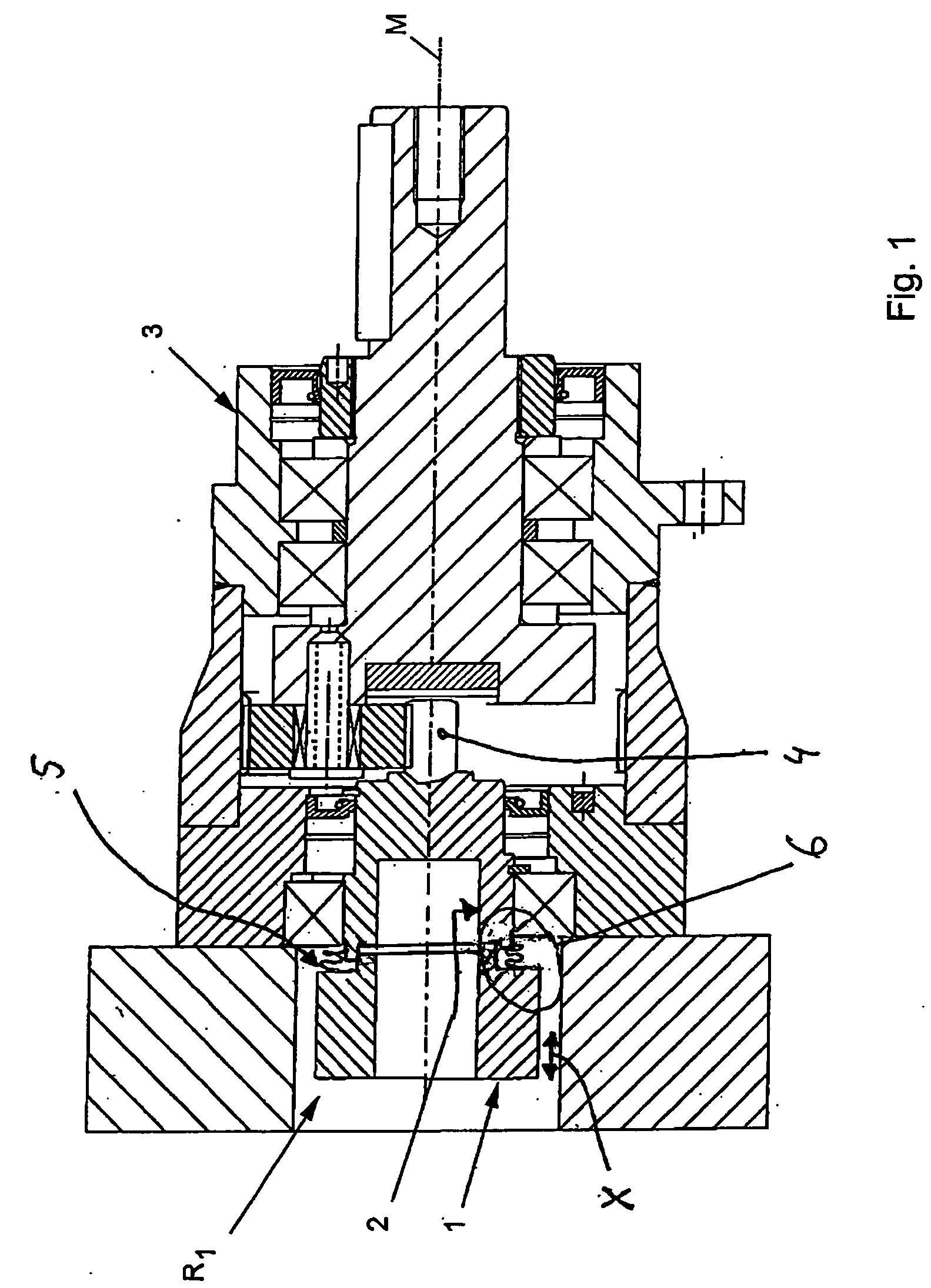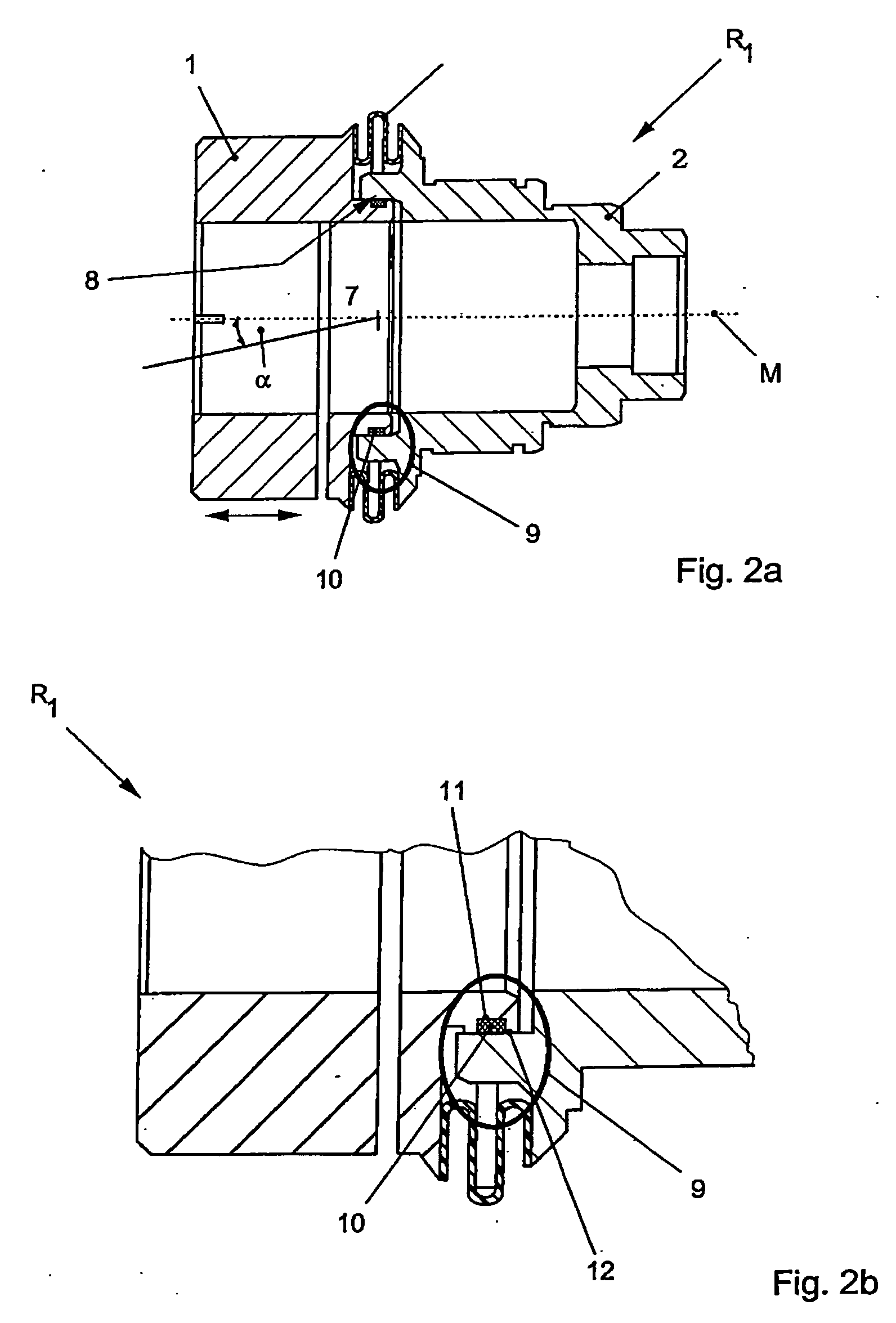Coupling for connecting two components
a technology of connecting components and couplings, applied in the direction of yielding couplings, couplings for rigid shafts, fastening means, etc., can solve the problems of insufficient precision of drive elements, wear, and thermal stress, and achieve the effect of reducing the number of components
- Summary
- Abstract
- Description
- Claims
- Application Information
AI Technical Summary
Benefits of technology
Problems solved by technology
Method used
Image
Examples
Embodiment Construction
[0024] According to FIG. 1, a coupling R1 according to the disclosure comprising a clamping hub 1 as a connecting element is inserted in a drive, electric motor, servomotor, or the like (not illustrated here in greater detail) and a transmission element 3.
[0025] The centering hub 2 is used for a matched-fit insertion into the transmission element 1 and for transmission of the torque to a spur pinion 4 of the transmission 3.
[0026] To compensate for axial expansion, in particular as the result of heating of the drive element, the clamping hub 1 is mounted so as to be slightly movable with respect to the centering hub 2 in the axial direction, in the illustrated double arrow direction X, along the center axis M.
[0027] The torque of any given drive is transmitted through the centering hub 1 via a bellows 5, in particular folding bellows 6, to the centering hub 2. The bellows 5, in particular folding bellows 6, which provides radial centering between the clamping hub 1 and centering h...
PUM
 Login to View More
Login to View More Abstract
Description
Claims
Application Information
 Login to View More
Login to View More - R&D
- Intellectual Property
- Life Sciences
- Materials
- Tech Scout
- Unparalleled Data Quality
- Higher Quality Content
- 60% Fewer Hallucinations
Browse by: Latest US Patents, China's latest patents, Technical Efficacy Thesaurus, Application Domain, Technology Topic, Popular Technical Reports.
© 2025 PatSnap. All rights reserved.Legal|Privacy policy|Modern Slavery Act Transparency Statement|Sitemap|About US| Contact US: help@patsnap.com



